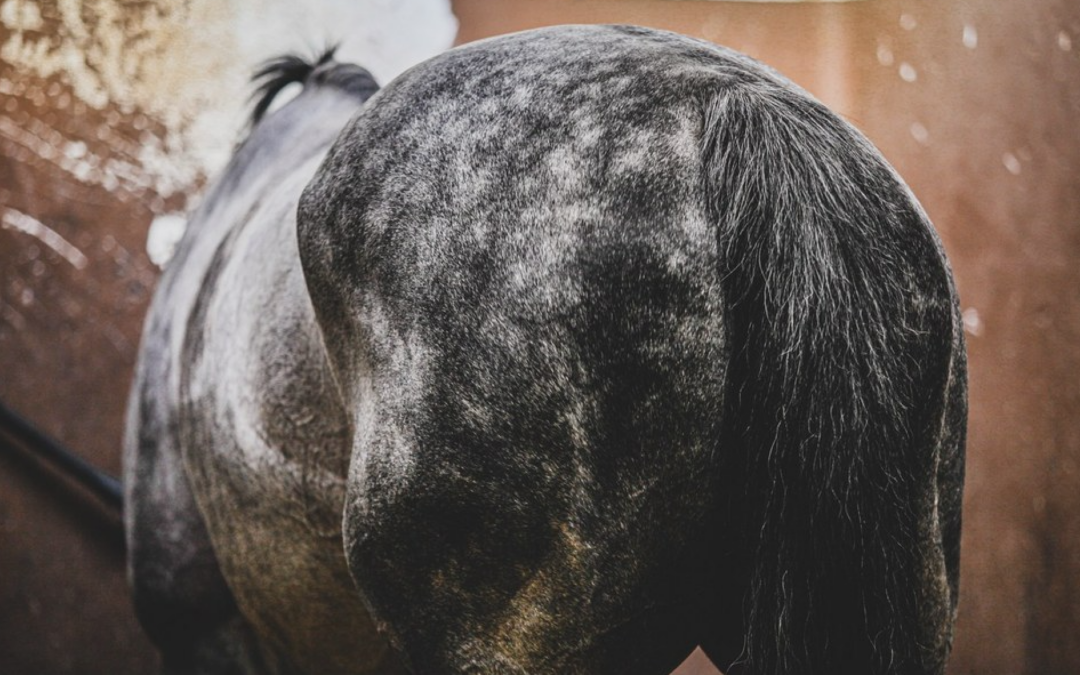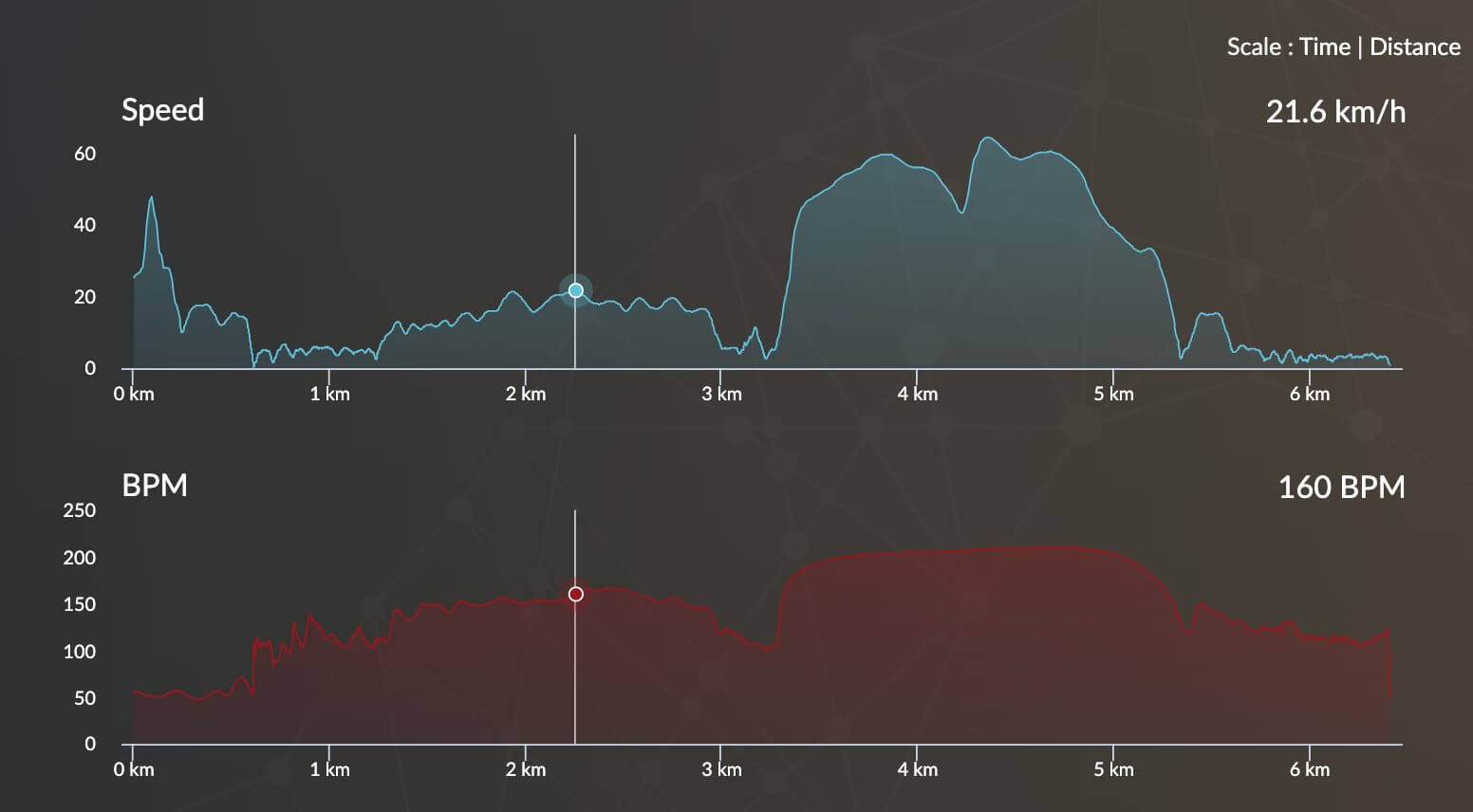Optimising bone repair is a key factor in limiting the risk of injury. Subjected to constant load during exercise, athletic horses’ bones develop microcracks. Adequate post-injury rest periods are crucial to allow the bone structure to regenerate.
What are the temporal markers of rest periods? What type of protocol is most effective? How can monitoring help detect bone fatigue?
Rest time markers
When the horse is subjected to a repeated succession of traumas beyond what his bones are capable of tolerating, the bone becomes more fragile and produces microcracks. It has been found that rest periods are often too short to allow the bones to fully recover from this damage. In fact, because these rest periods are too short, microcracks accumulate and grow. Some heal, but training adds new microcracks, as shown in the diagram below.
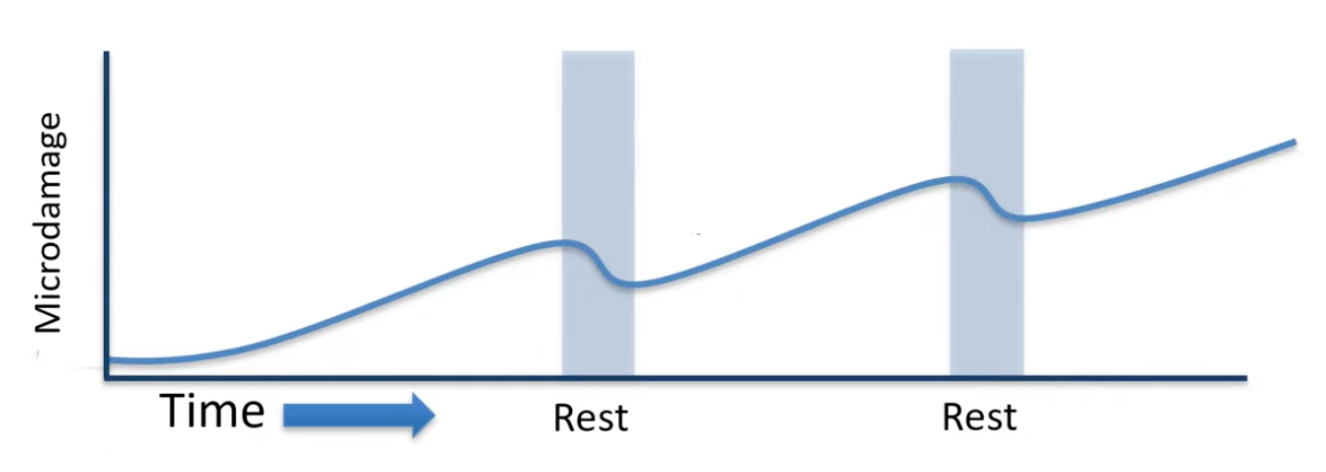
Increase the duration of rest periods
Ideally, this rest period should be extended, to allow the bones to rebuild between each training period, and to prevent further accumulation of microfissures.
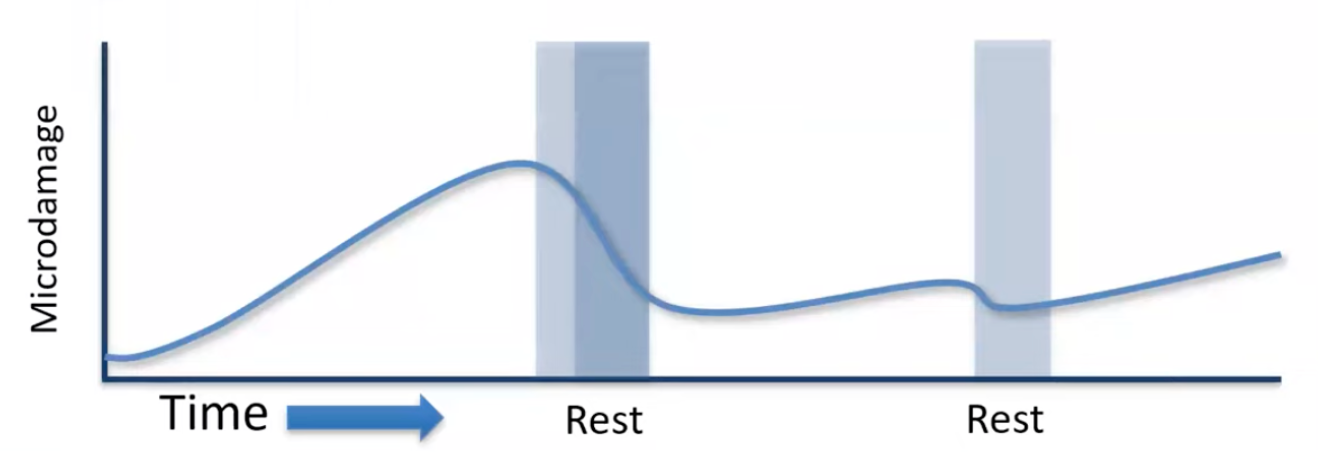
Increase the frequency of rest periods
If the duration can’t be extended, an alternative would be to increase the frequency of these rest periods, so as to prevent the level of microcracking from exceeding a certain threshold.
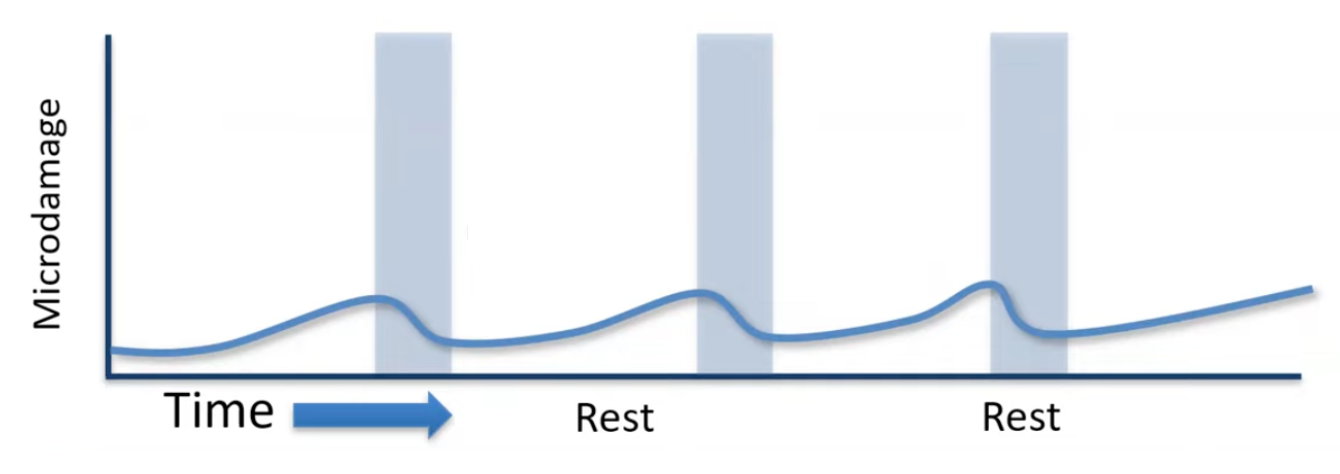
Note: Resting times depend on the intensity and duration of training periods. If your horse has very intense training periods, then his rest periods will need more time to recover than a horse producing less intense efforts.
Survey: correlation between rest periods and injury risk
A survey was conducted among 66 Australian trainers, to test the correlation between their choice of resting method and the rate of increase in injury on 2-year-old horses.
This survey shows that the most effective way of reducing the injury rate is to increase the frequency of rest periods.
By short rest periods, we mean a period of 6 weeks or less.
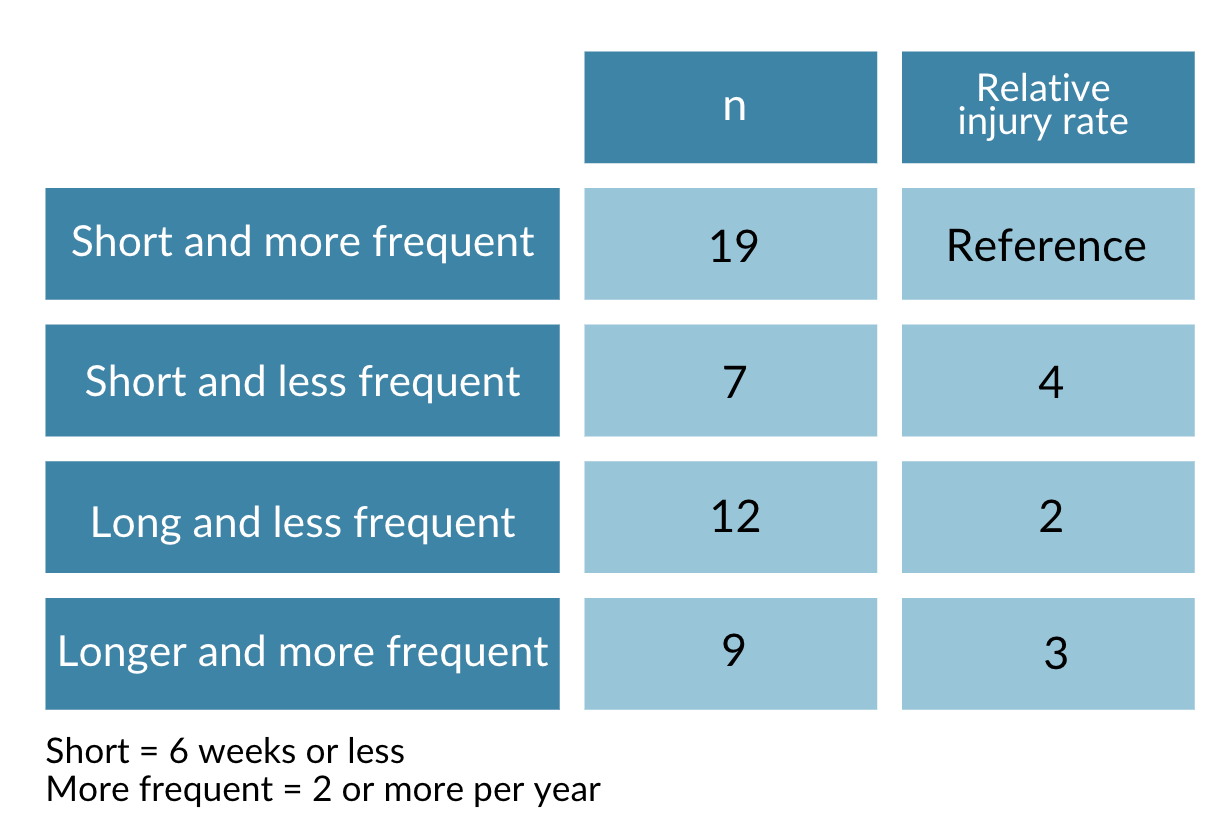
A longer resting period would not be appropriate for 2-year-old horses. Indeed, as they are in a growth phase, their skeleton must adapt to the workload. If the skeleton isn’t sufficiently stressed, it won’t be able to do this and build up properly. What’s more, when they’re young, a short period of rest is all they need, as their bones have the capacity to recover more easily than older horses.
Indeed, 3-year-old horses, for example, have suffered more damage and recover less well. They therefore need more time to promote bone renewal.
Find out more about bone response to loading in this article.
Establishing training and rest protocols
The balance between training and rest periods has a significant impact on the rate of bone structure renewal. Let’s take a look at the effects of these 3 programs on this rate.
First protocol: standard
2 x 20 weeks training
2 x 6 weeks rest
Second protocol: extension of the rest period by one week
2 x 19 weeks training
2 x 7 weeks rest
➡️ Increased bone turnover with +5.4% for lateral condyle and +3.4% for parasagittal groove.
Third protocol: extending the rest period by two weeks
2 x 18 weeks training
2 x 8 weeks rest
➡️ Increases bone turnover with +12.0% for lateral condyle and +7.4% for parasagittal groove.
One week’s difference between a rest and training protocol can therefore make a significant difference to the horse’s ability to recover. It is therefore important to include sufficiently long rest phases in the training program to allow for this reconstruction.
Monitor to prevent injury risk
Spot the signs of bone fatigue
Horses don’t talk, but regular and accurate observation of any changes can help us detect signs of problems with their bone system.
- Behavioural changes
- Decreased performance
- Subtle change in stride
The first reaction to these signals should be to reduce training intensity, so as to allow the skeleton to recover. Of course, they are not necessarily a sign of a bone problem, but this type of injury remains the most common. Bone injuries are not the only cause of this type of change in horses.
Early detection of bone fatigue, however, remains difficult. 90% of fatalities from this type of fracture showed no abnormality at the pre-race veterinary examination.
Monitoring for prevention
Successfully diagnosing pain before it becomes an injury is one of EQUIMETRE’s main objectives. Tracking regularity, stride frequency and stride length enables longitudinal monitoring and a complete heart rate analysis. Establishing regular monitoring of horses provides reference data for each horse and an interesting data history.
For example, an abnormally high heart rate, as in the example below, may indicate pain or an unusually poor recovery. In addition, analysis of movement data is the starting point for fatigue fracture detection. Observing an anomaly in the data can be a warning sign of lameness, even before it can be detected with the naked eye.
Example of training data from the EQUIMETRE platform that may suggest warm-up pain
The use of monitoring during the rest phase also makes it possible to rigorously track the progress of recovery. The combination of veterinary knowledge and cutting-edge technology is the foundation of optimal care, aimed at minimising the risk of relapse and promoting a successful return to training.
Conclusion
In conclusion, bone repair in horses is of crucial importance to their well-being and performance. Adequate rest periods are essential to promote optimal healing. A quantitative, objective approach to monitoring minimises the risk of relapse, thus preserving the health and longevity of horses.
SOURCES:
Webinar hosted by Prof. Chris Whitton
How to avoid injuries in horses? Training practices based on evidence (2023). ARIONEO. 20 April. Available at: https://www.youtube.com/watch?time_continue=1690&v=A_dIUH1GIg4&embeds_referring_euri=https%3A%2F%2Fvet.arioneo.com%2F&source_ve_path=MTI3Mjk5LDI4NjYzLDEyNzMwMSwyODY2MywxMjczMDAsMjg2NjMsMTM3NzIxLDEyNzI5OSwxMjcyOTksMjg2NjMsMTI3MzAxLDM2ODQyLDIzODUx&feature=emb_title (Accessed: 20 September 2023).
Key words: bone repair, rest, training, microcracks

